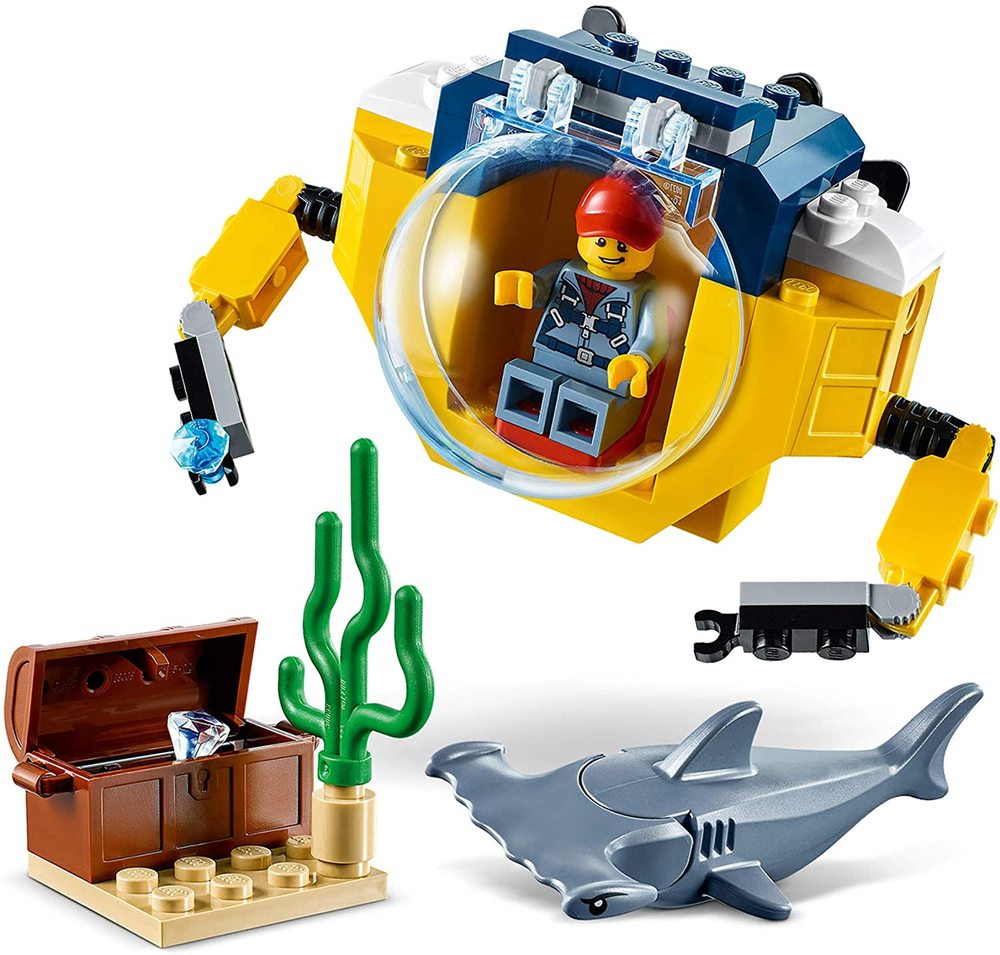

The Mysterio set sort of uses it for a torso for a squat robot with wheels (but I do not believe it has achieved its 'torso potential' so far). Its name indicates it is intended to be part of a plane but to date this has never been the case this set and the TIE fighter use it for other vehicles. It is exclusive in Bright Yellow/ Yellow (6299783) in this set and has so far appeared in two other similarly simple sets: 2019’s 75237 TIE Fighter Attack in Medium Stone Grey/ Light Bluish Gray (6253093) and in 2020’s 76149 The Menace of Mysterio in Bright Green (6295118). I shall call it the Big Torso, because when I first looked at it, that is what it immediately suggested to me. There was one part that piqued my interest: the catchily named Brick Special 4 x 10 x 4 - Plane Bottom (44665). Nonetheless, as a perfectionist, he notes several areas for improvement.You may be wondering why New Elementary is reviewing such a small set for young builders. I’d say the controls are as good as in Submarine 2.0, which has been the best so far,” he reports.

The automatic depth control really makes controlling it easy, as you can focus on pressing only forward/backward and left/right buttons and forget the dive/surface buttons. Thankfully, Submarine 4.0 has performed well in a range of environments from swimming pools and water tanks to a nearby river. With lots of weeds and obstructions on the river bed, he was keen to avoid collisions, especially as it cost more than 600 EUR. To prevent entanglements while on manoeuvres, he attached a magnet on the inside top of the submarine frame so he could ‘fish’ the craft out of danger, if needs be. He added 580 g of tungsten pellets to make the submarine dive gently, making adjustments using the syringe. Weighed on a kitchen scale, the submarine was 826 g, with a displacement of 1614 g. For this version, he splashed out on expensive 2.5 mm tungsten pellets weighing 18 g/cm3. In Submarines 2.0 and 3.0, he used lead pellets to provide extra weight, but they were quite sizable and took up valuable space inside the submarine’s frame. Raspberry Pi provides enough juice to power the board, so he decided to discard its LiPo battery in favour of a LEGO waterproof rechargeable battery pack. A SparkFun TFMini-S Micro laser sensor provides a second means of measuring the submarine’s depth, but its accuracy is affected by the murky environments in which he was using it.Ī more successful purchase was the radio board he harvested from a cheap Chinese toy submarine, having chosen it for its 27MHz radio frequency (needed to penetrate water) and its aesthetically pleasing controller. It connects to Raspberry Pi Zero 2 W via I2C. LEGO gears were fitted to control the syringe that would adjust the buoyancy.Īn absolute pressure sensor (which measures pressure relative to a vacuum, and is unaffected by the ambient pressure) is used to track the submarine’s depth. The basic acrylic cylinders were precision-cut and end pieces with rubber seals attached to form a waterproof unit. He now says wireless LAN is “an absolute necessity” which “made the development process a lot faster.” Underwater flying machineĪ fair amount of time and effort went into creating the submarine’s beautiful transparent acrylic case with tightly fitting and invisible end caps.
#Simple lego submarine code#
He soon found the wireless LAN connectivity invaluable when tweaking the PID parameters and updating any Python code without having to physically connect to the Pi Zero 2 W via USB (which would have involved carefully extracting everything from the precision environment he’d created). He planned a similar setup here, to monitor and control the submarine’s depth. That will help the control loop.” This loop is also the reason for using Raspberry Pi: as we reported last issue, he had recently made an impressive inverted pendulum that uses a PID (proportional integral derivative) control loop running on Raspberry Pi Zero 2 W to accurately measure and compensate for constantly changing speed, location, and pressure levels. Most importantly, “you can measure the piston position with a LEGO EV3 motor that contains a tachometer.

However, it had proved a more stable setup and would not compress under pressure when submerged. He settled on the last method for Submarine 4.0, despite the difficulty of gauging the neutral buoyancy point. The first three variously used propellers to add or reduce buoyancy (“gravity and buoyancy stay always the same while the propellers exert force”) a balloon, and an air compressor to adjust the amount of water displaced, thereby controlling whether the submarine sinks or rises and a piston ballast to suck in more water to add weight and increase the sub’s gravity. This is the fourth LEGO submarine design he has completed.


 0 kommentar(er)
0 kommentar(er)
